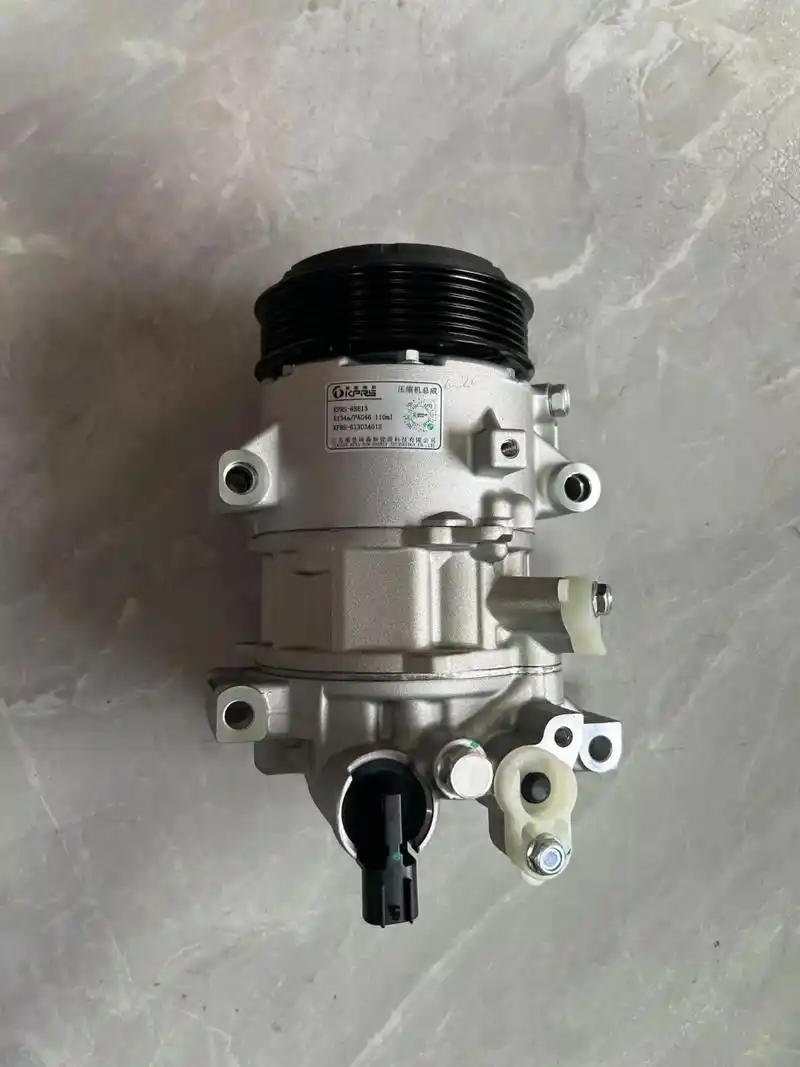The electrification of the automotive industry has necessitated a paradigm shift in vehicle thermal management. The heat pump system has emerged as a critical technology for electric vehicles (EVs), dramatically improving winter range by efficiently scavenging heat from the ambient air and powertrain components. At the heart of this system lies the electric compressor, whose technological evolution is pivotal to overall performance, efficiency, and passenger comfort.

Technical Development Trends:
- High-Speed, High-Efficiency Motor Integration: Unlike belt-driven compressors in internal combustion engine (ICE) vehicles, EV compressors are directly driven by a high-speed electric motor. The trend is towards achieving higher rotational speeds (exceeding 10,000 RPM) to reduce the physical size and weight of the compressor for a given cooling capacity. This is coupled with the adoption of high-efficiency permanent magnet synchronous motors (PMSMs) and advanced control algorithms for precise speed modulation and minimal energy draw.
- Dominance of Scroll-Type Compressors: The scroll compressor has become the dominant architecture for EVs due to its inherent advantages: high efficiency, low noise and vibration, compact size, and reliability. Ongoing R&D focuses on optimizing the scroll profiles (wrap geometry) to minimize internal leakage and mechanical losses, further pushing the boundaries of its coefficient of performance (COP).
- Wide Operational Range for Heat Pump Duty: Modern electric compressors are being engineered to operate effectively across an extreme range of conditions. This includes very low ambient temperatures (e.g., -30°C) where traditional systems fail. Developments involve managing internal pressures and temperatures, ensuring lubrication flow, and maintaining seal integrity under these harsh conditions to enable efficient heat pump operation year-round.
- Compatibility with Low-GWP Refrigerants: The industry is transitioning to environmentally friendly refrigerants with low global warming potential (GWP). R744 (CO2) is a leading candidate but operates at extremely high pressures (over 10x that of R134a). This demands compressors with robust designs, new materials, and seals capable of withstanding these pressures efficiently. Development for R1234yf and other refrigerants also continues.
- System-Level Integration and Intelligence: The compressor is no longer a standalone component. It is an integrated part of a complex thermal management system that cools the battery, power electronics, and cabin. Future compressors will feature more sensors and smarter controllers to communicate with the vehicle's domain architecture, allowing for predictive energy management and optimized performance based on navigation data and user preferences.
Key Challenges:
- Cost and Complexity: High-performance electric compressors with integrated power electronics are significantly more expensive than their ICE counterparts, impacting overall vehicle cost.
- Noke, Vibration, and Harshness (NVH): At high speeds, the compressor can become a source of high-frequency noise, which is more perceptible in the quiet cabin of an EV. Mitigating this through advanced acoustics engineering is a major challenge.
- Lubrication Management: Ensuring reliable oil circulation back to the compressor across all angles, accelerations, and operating modes (especially during shutdowns) is critical to prevent seizure and wear.
- Durability under Extreme Conditions: Operation with high-pressure refrigerants like R744 and under extreme temperature cycling places immense stress on materials, bearings, and seals, demanding new engineering solutions for long-term reliability.
In conclusion, the electric compressor is a cornerstone of EV efficiency. Its continued development towards higher speed, greater intelligence, and compatibility with new refrigerants is essential for extending driving range, enhancing comfort, and meeting global sustainability goals.




